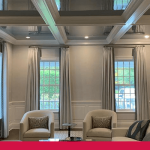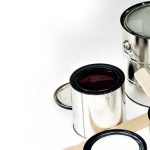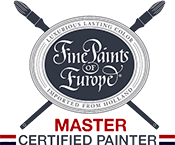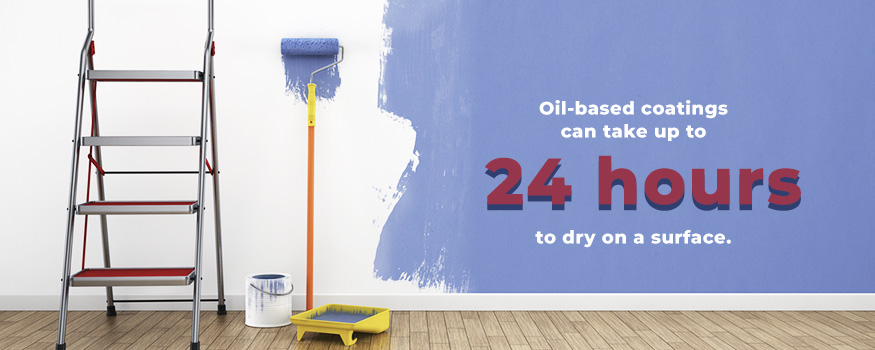Water-Based vs. Oil-Based Paints
December 23, 2024
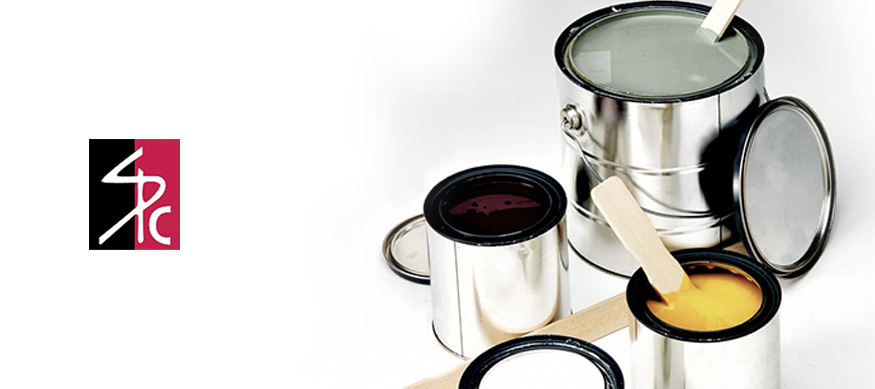
If you are planning a home painting project, the type of paint you use will significantly impact its success. Many available paints are water-based or oil-based. While both are used on various surfaces, oil- and water-based paints have different benefits.
Whether you’re painting to elevate your home’s interiors or exteriors, it’s important to know the differences between these types of paint. To determine the right one for your home, you will want to explore water-based vs. oil-based paint in terms of sheen, color quality, drying periods, durability and more.
First, let’s discuss the importance of using the proper primer.
Water vs. Oil-Based Primer
Primers treat surfaces before painting to enhance durability and produce a smoother finish. Water-based primers are for water-based coatings, such as latex and acrylic paint. These paints are typically used to treat ceilings or interior walls. Oil-based primers are used for enamel paints to treat wood, metal and ceramic surfaces. It’s ideal to use primers before starting on any painting project. Professional painters like Shoreline Painting know which primers contribute to the best results and have the expertise to produce a smooth finish.
Characteristics of Oil-Based Paint
Oil-based paint uses oil — usually linseed oil — as a binder to adhere well to surfaces like wood and metal. It also uses solvents like turpentine to refine its thick texture for smoother application. Oil-based paints can be less expensive than other finishes, making them cost-effective for large projects. Learn more about the characteristics of oil-based paints below.
Paint Finish
Also called paint sheen, paint finish describes the glossiness or shine level reflected on a painted surface. For example, sheen can appear flat or matte with no shine, satin with a velvety sheen or glossy with a shiny surface. Glossy finishes can make flaws more visible, so they are often used on smaller surfaces, such as trims, doors or cabinets. If you want to paint an entire room with high gloss paint, you can leave it to the experts at Shoreline Painting.
Both oil- and water-based coatings are available in various sheen levels. However, oil-based paints generally have a glossier finish than water-based coatings. This is especially apparent with newly painted surfaces. However, it’s important to note that the glossy appearance can dull over time.
Color Quality
Oil-based coatings are available in a wide variety of vibrant colors and shades. While they’re generally durable, paint color for oil-based coatings may not retain quality like water-based latex coatings over time. Oil-based paints may turn yellow over the years, which is more apparent with white coatings. Consider this factor if you prefer bright white paint for a large surface.
Drying Times
Oil-based coatings are known to dry more slowly than water-based paints, meaning longer working hours for projects. This isn’t ideal if you’re looking for a faster-drying paint. However, extended drying times are suitable for more complex projects that require color blending and intricate paintwork.
Oil-based coatings can take up to 24 hours to dry on a surface. Painters also need to wait several hours before applying another coat. Even a small amount of moisture can damage surfaces for oil-based coatings, so they must completely dry before another application.
Durability
Oil-based coatings are highly durable and resistant to wear and tear. They can withstand moisture and humidity, making oil-based coatings suitable for bathrooms and kitchens. Their smooth and glossy finish also makes wiping dirt and stains on surfaces easy.
While durable, oil-based coatings have a few disadvantages. They lose flexibility as they dry, especially when not properly sealed, and may crack and become chalky over the years. Oil-based paints are also prone to ultraviolet (UV) light damage, making them less ideal for outdoor areas.
Volatile Organic Compounds (VOCs)
VOCs are solvents in vapor form released into the air as paint dries. They’re the reason for the strong odor that lingers in newly painted areas. VOCs can be derived from plants and petrochemicals. They cause air pollution and health issues, such as skin irritation, nausea and headaches.
Oil-based coatings contain higher levels of VOCs than water-based paint. Painters must prioritize proper ventilation and wear protective gear to avoid prolonged exposure to VOCs.
Characteristics of Water-Based Paint
Water-based coatings use water to contain the pigment, binders and other ingredients like solvents, resins and additives. When comparing water- vs. oil-based paint, the former dries fast and is more flexible than hard, oil-based coatings. There are two main types of water-based paints:
- Latex paint provides greater coverage and has lower concentrations of acrylic polymers. It is generally budget-friendly and ideal for walls.
- Acrylic paint contains higher levels of acrylic polymers, is durable and adheres well to surfaces. It is also well-suited for furniture and cabinets.
Water-based coatings are generally nonflammable and don’t have a strong odor like oil-based coatings. They can also be used on various surfaces, such as concrete, aluminum siding and vinyl siding. Learn more about their qualities below.
Paint Finish
Water-based coatings generally don’t provide a high-gloss finish compared to oil-based paints. Their painted surface isn’t as reflective as that of oil-based coatings. However, water-based paints retain their finish longer and have the same sheen quality for years. In terms of paint texture, they’re not too thick, cause less brush drag and provide a smooth and even application.
Color Quality
Like oil-based paints, water-based coatings come in a wide range of colors and shades. However, water-based products are UV-resistant, making them less prone to fading and more ideal for exterior projects like outdoor walls and fences.
Drying Times
While oil-based coatings require longer drying times, water-based coatings dry relatively quickly. This means you can sometimes complete small projects in one day. Once applied, you can recoat a surface within a few hours. This makes water-based paints ideal for residential projects, especially if you want to minimize downtime and labor hours.
Durability
In recent years, many water-based paints have been developed to dry hard while still maintaining the flexibility to adjust to cold and warm weather. This flexibility enables the coating to contract and expand, making water-based paint less prone to brittleness and chalking.
Water-based paints can also handle some moisture on their surface without weakening adhesion, though it can thin out the consistency of application. When looking for high-quality paint, choose thicker and less watery latex or acrylic coatings for better coverage. Additionally, keep in mind that some water-based coatings may not adhere well to smooth, glossy surfaces or raw metal.
VOCs
Due to lower levels of VOCs, water-based coatings are considered healthier and more eco-friendly than oil-based coatings. Water-based paints release fewer harmful fumes into the air, which results in less paint odor and better air quality. This makes latex and acrylic coatings a suitable option for interior projects. If you’re sensitive to strong odors, we recommend using water-based paint.
Contact Shoreline Painting for High-Quality Luxury Painting Services
Want an excellent quality paint finish for your home? Consult the experts at Shoreline Painting for first-class painting services. We provide professional interior painting to elevate your kitchen, bathroom or any indoor space. If you want to upgrade your home’s facade, rely on us for the finest exterior painting services.
Shoreline Painting is a Fine Paints of Europe Master Certified Painter. We have over 35 years of experience providing high-end painting services for many residential clients. Contact us today to request a consultation. Our dedicated team is ready to transform your home.
Recent Posts & Guides
